 |
 |
 |
 |
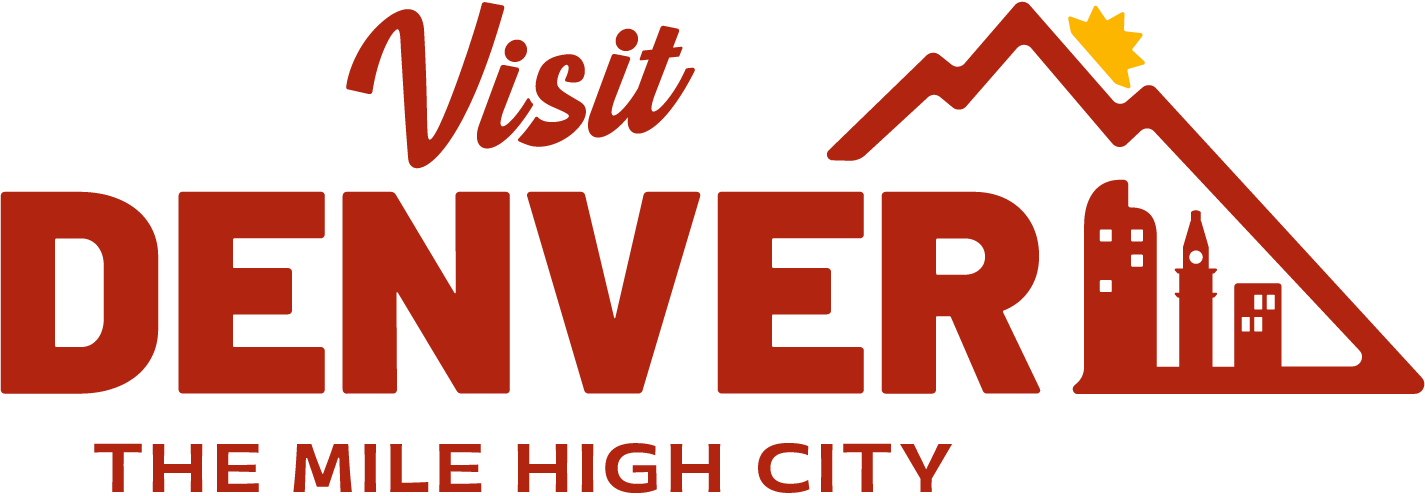 |
The American fitness landscape has undergone a dramatic transformation over the past five years. Fitness studios have multiplied, and wearable fitness trackers now adorn one in three American wrists. But this fitness revolution has created a ripple effect that few saw coming: a massive surge in demand for professional massage therapy.
As millions of Americans push their bodies to new limits, recovery services have evolved from luxury to necessity. In cities where fitness participation rates are high, massage therapy bookings have increased over the past three years. This isn't just a trend; it's a fundamental shift in how Americans approach wellness, and it's creating opportunities for those who understand the connection between active lifestyles and recovery needs.
Where Fitness Fuels Recovery
According to the latest ACSM American Fitness Index, residents in the top-ranked city live within a 10-minute walk of a park, blending lifestyle and wellness seamlessly. Across the country, an average of 59.9% of city residents met aerobic activity guidelines in 2025, a significant increase from previous years.
This boom in active living creates a massive secondary market, one built on recovery. As populations embrace high-intensity training, marathon running, and boutique fitness, the demand for professional massage therapy isn't just growing; it's exploding. Cities with high public park access often see a much higher booking rate for sports massage and recovery services.
In this report, we’ll not only reveal the 10 most fitness-friendly cities in America but also uncover the powerful connection between their active culture and the surging demand for massage recovery. We'll explore the science, the local trends, and the market gaps.
For many years, Massage Tools has outfitted thousands of wellness clinics in these hotspots; here’s what we’re seeing on the ground and how you can capitalize on these trends to build a thriving practice.
How We Ranked the Cities
To create a comprehensive and trustworthy ranking, we moved beyond a single metric. Our analysis combines leading national fitness data with hyper-local wellness trends to provide a holistic view of each city's health ecosystem. The 2025 ACSM American Fitness Index even added new indicators like trail miles and pickleball courts, reflecting evolving fitness trends.
The table below summarizes each data source, the specific metrics we measured, and why they matter to our fitness-and-recovery ranking system.
| Data Source | Metric Measured | Why It Matters |
| ACSM American Fitness Index | Personal health, community infrastructure, park access | Provides a foundational score for a city's overall commitment to health and active living. |
| Mindbody/ClassPass Data | Bookings for massage, stretching, and cryotherapy | Directly measures consumer demand for professional recovery services. |
| WalletHub Wellness Scores | Healthcare costs, healthy food access, wellness spend | Indicates the population's financial and cultural investment in their well-being. |
| U.S. Census Bureau | Population density and demographics | Helps scale demand metrics, defining our "recovery bookings per 10,000 residents" benchmark. |
Our final score was calculated using a weighted average: 50% ACSM Fitness Score, 25% Recovery Demand (bookings per 10k residents), 15% Wellness Spend, and 10% Population Density. This approach ensures that our list rewards not just inherent fitness infrastructure but also the tangible, growing market for recovery services that professionals like you provide.
Key Insight: Our ranking goes beyond just counting parks. It measures the tangible, growing market for recovery services, revealing where active lifestyles translate directly into business opportunities for massage therapists.
America’s Top 10 Fitness-Friendly Cities
Based on the comprehensive ACSM American Fitness Index, which evaluates everything from park accessibility to chronic disease rates, these urban centers don't just excel at getting residents moving; they've created thriving ecosystems where recovery services have become essential infrastructure.
These ten cities represent the gold standard of American fitness culture, and they're reshaping the entire wellness industry in the process.
The data reveals fascinating patterns which indicate that cities with the highest fitness scores consistently show the strongest demand for massage therapy services, with some markets experiencing significant growth.
Whether you're a wellness professional seeking your next location or an established practice looking to understand market dynamics, the table below highlights the key metrics and emerging opportunities in each city.
| Rank | City | ACSM Score | Recovery-Service Demand | Standout Stat |
| 1 | Arlington, VA | 85.0 | High | #1 in Community & Recreational Infrastructure |
| 2 | Minneapolis, MN | 83.1 | Very High | 41% YOY growth in sports-massage bookings |
| 3 | Denver, CO | 81.9 | Very High | Highest participation in outdoor recreation |
| 4 | Seattle, WA | 80.5 | High | 27% surge in ergonomic-injury massage demand |
| 5 | Washington, D.C. | 79.8 | High | Top 3 for public transit use and walkability |
| 6 | San Francisco, CA | 78.2 | Very High | Highest per-capita spending on wellness services |
| 7 | Boston, MA | 77.6 | High | Major hub for marathon training and events |
| 8 | San Diego, CA | 76.4 | High | Year-round demand for water sports recovery |
| 9 | Austin, TX | 75.9 | Growing | Fastest-growing demand for mobile massage services |
| 10 | Portland, OR | 75.1 | High | Strong culture of integrating holistic and physical health |
Surprising Delta
| Seattle jumps three spots from previous years, driven by a post-pandemic surge in demand for massage targeting ergonomic and remote-work-related injuries. |
Growth Leader
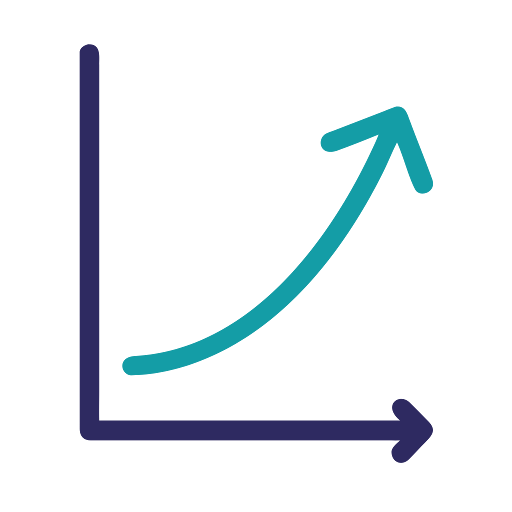 |
While Minneapolis boasts impressive overall demand, Austin shows the fastest rate of growth, indicating a market with significant untapped potential. |
The Power of Outdoors
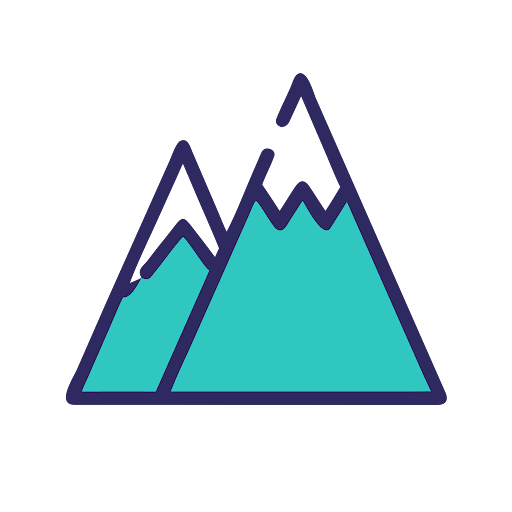 |
Denver's top-3 ranking is fueled almost entirely by its residents' passion for hiking, skiing, and climbing, creating a consistent need for muscle recovery specialists. |
Key Insight: While cities like Minneapolis show massive established demand, Austin's rapid growth signals a market with untapped potential. Look for both high volume and high growth when assessing opportunities.
A Deep Dive into Our Top 5 City Spotlights
1. Arlington, Virginia
Arlington, VA, named America’s Fittest City for the eighth consecutive year in 2025, thrives on its incredible infrastructure. With more public parks and recreation centers per capita than any other city, residents live an active lifestyle. Recovery thrives here because the population is highly educated on wellness and sees massage not as a luxury, but as essential maintenance for their active routines.
The city boasts a significant number of community fitness centers serving just over 200,000 residents, a ratio unmatched nationwide. This infrastructure investment pays dividends for massage therapists.
The demographic sweet spot, median age of 35.5, household income $120,000+, and 76% holding bachelor's degrees or higher, creates clients who understand the science behind recovery and budget accordingly.
Arlington's unique position adjacent to DC also means therapists serve everyone from marathon-running congressional staffers to CrossFit-devoted Pentagon employees. The city's 10 farmers markets and emphasis on clean living extend naturally to bodywork, with clients often booking massage sessions immediately after their Saturday morning trail runs.
For massage professionals, Arlington represents the gold standard with educated clients who book regularly, pay premium rates, and refer aggressively within their fitness communities.
2. Minneapolis, Minnesota
Minneapolis is a fitness hotspot with its year-round cycling culture and extensive trail systems keep residents moving. What makes Minneapolis unique is its refusal to let weather dictate wellness. The city's over 200 miles of bike lanes don't empty in winter, they fill with fat-tire bikes and dedicated commuters.
The Grand Rounds Scenic Byway system creates a 50-mile loop perfect for runners who layer up rather than retreat to treadmills. This hardcore commitment to outdoor fitness, combined with the Midwest's growing tech scene, creates a perfect storm for recovery services.
Local massage therapists report unusual seasonal patterns. While other cold-weather cities see fitness dips in winter, Minneapolis clinics stay booked solid as athletes deal with the additional strain of cold-weather training.
The city's Scandinavian heritage brings a cultural appreciation for wellness practices where saunas, cold therapy, and therapeutic massage are seen as normal as morning coffee.
3. Denver, Colorado
The Mile High City's fitness culture is defined by the mountains. Skiing, hiking, and trail running are weekend staples, leading to a constant need for deep tissue and sports massage. Recovery services are seen as a vital part of the outdoor lifestyle, helping adventurers get back on the trail faster with the right portable massage tables.
Denver's elevation is a lifestyle multiplier that intensifies both training and recovery needs. At 5,280 feet, athletes work harder for oxygen, muscles fatigue faster, and recovery takes longer. This physiological reality has created the most sophisticated recovery market in the Mountain West.
Local therapists report that most clients present with altitude-related fatigue combined with overuse injuries. The city's 300 days of annual sunshine mean the outdoor season never really ends, just transitions from hiking to skiing.
Denver's unique "aprés-adventure" culture has normalized immediate recovery protocols, massage clinics near popular trailheads stay open until 9 PM on weekends to catch returning adventurers.
The Red Rocks Amphitheatre area has become ground zero for fitness recovery, with athletes completing morning stair workouts then booking afternoon massage sessions. Mobile massage services equipped with portable tables thrive here, meeting clients at their homes after epic mountain days.
The economic impact is substantial with Denver residents spending more on recovery services than the national average, viewing massage as essential as their Patagonia gear.
4. Seattle, Washington
Seattle's unique blend of outdoor access and a massive tech workforce creates a dual demand. On one hand, you have hikers and kayakers. On the other hand, you have thousands of tech employees seeking relief from neck, shoulder, and wrist strain.
The Emerald City presents a fascinating case study in market evolution. Traditional sports massage clinics found themselves adapting to serve both weekend mountaineers and weekday code warriors, developing hybrid treatment protocols that address both adventure injuries and desk-related dysfunction.
Seattle's outdoor culture remains vibrant despite the rain; residents hike the Cascades, kayak Puget Sound, and bike the Burke-Gilman Trail year-round. This creates therapists who must be equally versed in treating IT band syndrome from trail running and thoracic outlet syndrome from poor desk ergonomics.
The city's progressive workplace culture means many tech companies offer on-site massage as a standard perk, with some therapists building entire practices around corporate contracts.
The convergence of tech wealth and outdoor passion has pushed Seattle's massage industry toward innovation; clinics here were early adopters of booking apps, membership models, and integrated wellness plans that acknowledge both sides of their clients' lives.
5. Washington, D.C
Washington, D.C, sits at the intersection of high-performance work and high-commitment fitness. Weekdays are dominated by policy pros, attorneys, federal staff, and nonprofit leaders logging long hours at screens; weekends fill the National Mall, Rock Creek Park, and the Anacostia Riverwalk with runners, cyclists, and rowers. Massage isn’t treated as a splurge here; it’s a practical tool for staying sharp, mobile, and ready for the next deadline or training block.
Therapists see a clear split: desk-driven neck, shoulder, and forearm issues Monday through Friday, and sport-related calf, hip, and lower back work on weekends. The city’s dense network of run clubs and community training groups keeps recovery on a rhythm: prehab during buildup phases, heavier bodywork after key workouts, and lighter sessions in race week. Same-day bookings spike around major race weekends and after charity rides and community events.
Scheduling follows DC’s cadence. Early-morning appointments catch clients before committee hearings and court appearances; late-evening sessions serve those leaving the Hill or wrapping a brief. Mobile massage performs well with hotel guests, visiting delegations, and convention traffic, while neighborhood clinics capture steady memberships from residents who train on the trails and commute by bike.
For massage professionals, DC rewards precision and professionalism. Evidence-informed sports massage blends with ergonomic corrective work, and therapists who communicate clearly, document well, and coordinate with trainers or PTs build durable referral networks across run clubs, fitness studios, and professional circles.
Why These Active Cities Demand Massage Recovery
The connection between fitness and massage is more than anecdotal; it's grounded in science. Active populations in these top cities intuitively understand what research confirms. Professional massage is a powerful tool for enhancing performance, preventing injury, and accelerating recovery.
When we engage in strenuous exercise, our muscles sustain microscopic tears. The soreness that follows is part of the repair process. According to research from the National Institutes of Health (NIH), therapeutic massage can significantly mitigate this process through several key benefits, for example:
Reduces Inflammation
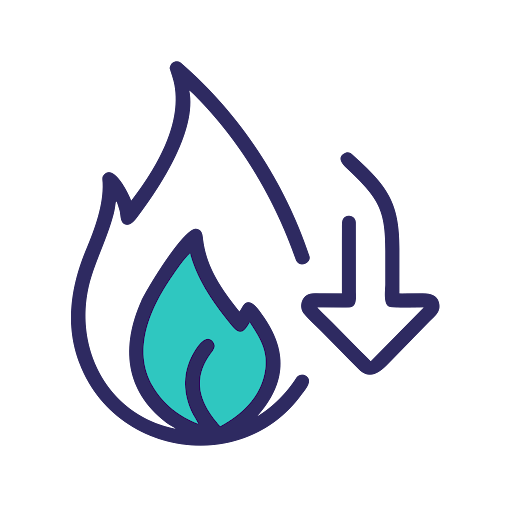 |
Studies done by the National Center for Biotechnology Information show massage can decrease the production of cytokines, which are inflammatory compounds that cause muscle soreness. |
Increases Range of Motion (ROM)
 |
By releasing tension in muscles, ligaments, and fascia, massage helps restore flexibility and mobility, crucial for preventing future injuries. |
Improves Perceived Recovery
 |
As noted by the Mayo Clinic, massage promotes relaxation and can reduce the perception of fatigue, helping athletes feel ready to train again sooner. |
Pro Tip: Use this information with clients. Explaining that massage actively reduces inflammation and restores mobility frames your work not as a luxury, but as essential maintenance for their active lifestyle.
Market Gap Analysis
The biggest opportunities often lie where demand is surging but the supply of qualified professionals hasn't yet caught up. We analyzed booking growth versus therapist density to identify these emerging hotspots. For ambitious clinic owners or therapists looking to relocate, these cities represent a significant market gap waiting to be filled.
Here are a few promising markets:
Raleigh-Durham, NC
With a booming tech sector and a highly educated population, fitness and wellness are priorities. The demand for recovery services is outpacing the number of available high-end clinics.
The Research Triangle's explosive growth has attracted thousands of young professionals who bring Silicon Valley wellness expectations to the Southeast.
Despite this fitness boom, the massage therapy landscape remains dominated by budget chains and spa services, leaving a glaring gap for sports-focused, evidence-based recovery work. The area's three major universities also create a steady stream of student-athletes and weekend warriors seeking performance optimization.
With median household incomes 20% above the national average and a culture that values both innovation and health investment, Raleigh-Durham is primed for premium recovery services that match its residents' sophisticated wellness demands.
Tucson, AZ
A haven for cyclists and endurance athletes, Tucson's wellness market is growing rapidly. There is a specific need for specialists in sports and orthopedic massage.
Known as "The Winter Training Capital," Tucson attracts professional cyclists, triathletes, and runners from October through April, creating a seasonal surge that local providers struggle to accommodate.
The city's 350 days of sunshine, extensive trail systems, and elevation training opportunities at nearby Mt. Lemmon make it irresistible to serious athletes. Yet despite hosting major events like El Tour de Tucson (attracting over 9,000 cyclists annually) and the Tucson Marathon, the city has fewer than half the sports massage therapists per capita compared to similar athletic hubs like Boulder or Bend.
The University of Arizona's sports programs and the growing retiree population seeking active aging solutions compound this supply-demand imbalance.
Salt Lake City, UT
Much like Denver, SLC's proximity to world-class mountains fuels an outdoor-obsessed culture. The demand for therapists specializing in athletic recovery is skyrocketing. With seven ski resorts within an hour's drive and a climbing scene that rivals anywhere in the world, Salt Lake City residents treat outdoor pursuits as religion rather than recreation.
The city's unique demographics, young population, high rate of gym membership, and a culture emphasizing clean living create perfect conditions for a thriving recovery market.
Recent Olympics legacy investments have spawned elite training facilities that attract both professional and amateur athletes year-round. The explosion of ultra-running (five 100-mile races within driving distance), the emergence of pickleball as a local obsession, and the year-round cycling enabled by the valley's mild winters have diversified the recovery needs beyond traditional ski injuries.
Yet current massage options cluster in either luxury spas or franchise operations, with few providers understanding the specific needs of someone training for the Wasatch 100 or recovering from a season at Alta. The market is particularly underserved for early morning and evening appointments that accommodate the "dawn patrol" lifestyle of locals who squeeze in mountain adventures before their 9-to-5 jobs.
Key Insight: The biggest opportunities aren't always in the top-ranked cities. A 'market gap' means less competition and higher client demand, creating the perfect environment to launch or expand your practice.
Case Studies
The Wellness-Tourism Engine Behind Massage Recovery Demand
The Global Wellness Institute’s Global Wellness Tourism Economy Report of 2018 shows that wellness travel is no niche, it’s a $639.4 billion market growing 6.5% annually from 2015 to 2017, more than double the rate of general tourism.
Travelers took 830 million wellness trips in 2017, and the vast majority were “secondary” wellness travelers, people on any kind of trip who still seek healthy food, fitness, spa, or recovery services. These secondary travelers account for 89% of wellness trips and 86% of spend, a crucial signal for massage providers: demand is no longer confined to destination spas; it’s embedded in everyday travel behavior.
Domestic trips dominate in volume, but international wellness travel is expanding faster and carries higher per‑trip spend. Critically, wellness tourists outspend the average traveler by wide margins, 53% more per international trip and 178% more per domestic trip, creating a high-yield customer profile for recovery services.
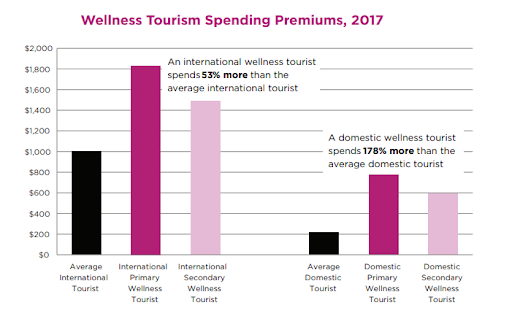
Within this surge, spa tourism, where massage sits at the center, accounts for roughly 48% of total wellness spend ($309.1 billion in 2017) and has been growing at 8% annually. North America leads expenditures, while Europe hosts the most wellness trips and Asia-Pacific posts the fastest gains, confirming a broad, durable demand curve.
The report also documents how hospitality and travel have retooled around recovery and prevention: hotels mainstreamed healthy rooms, in‑room fitness, and evidence‑based sleep features; airports and airlines added spas, movement circuits, and in‑flight mindfulness; and tour operators, cruises, and retreat brands have engineered wellness-first itineraries.
As wellness becomes a dominant lifestyle value, destinations with strong park access, trails, and active cultures see that activity convert directly into spend on recovery, mirroring the booking patterns clinics report in America’s fittest cities.
Massage as Mechanotherapy
According to a study done by Van Pelt, massaging acts as a helpful mechanical signal to the body, nudging muscles toward faster repair. In controlled studies, when a massage was applied soon after a hard, muscle‑damaging exercise, muscles healed more quickly and recovered strength better than without massage.
During recovery from inactivity, massage also supported a quicker return of muscle size and function. It does this by reducing inflammation, activating repair cells in muscle, and improving the body’s remodeling processes, how it breaks down damaged proteins and builds new ones, including the ribosomes that drive protein synthesis.
“The proliferation of satellite cells in response to massage may optimize the muscle's regrowth capacity.“
Douglas W. Van Pelt, Department of Physical Therapy and Center for Muscle Biology, University of Kentucky
These changes help people return to training sooner and more consistently. Interestingly, some benefits carry over to the opposite, non‑massaged limb, which can be useful when one side is immobilized or too sore to treat directly.
The best results show up when massage is delivered shortly after tough efforts and repeated in short, regular sessions during the early recovery window. Massaging helps calm inflammation, supports the body’s natural rebuild, and keeps people moving, exactly what active cities and recovery‑focused clinics need to maintain steady performance year‑round.
Action Plan for Professionals & Clinic Owners
Data is only valuable when you act on it. Use these steps and resources to translate market insights into a tangible plan for your practice.
Assess Your Market in 3 Steps
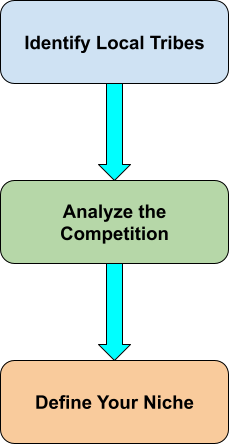
As seen in the flow chart above, you can assess the market by first identifying your local tribes, whether your city skews toward marathon runners, CrossFit enthusiasts, or corporate wellness seekers, so you can align services with the dominant fitness cultures.
Next, analyze the competition to see which services are saturated and where clear gaps exist, pinpointing underserved modalities or time slots you can own. Finally, use those insights to define a focused niche and package it into a compelling offer, such as “Post-Race Recovery Packages for Triathletes” in San Diego.
Data to Decisions
As you plan your next business move, keep these core insights from our analysis of America's most fitness-friendly cities in mind:
- Top City, Top Opportunity: Arlington, VA, leads the nation, proving that strong community infrastructure directly fuels demand for recovery services. With its unmatched combination of urban trails, premium fitness facilities, and health-conscious professionals, Arlington demonstrates how civic investment in wellness creates a multiplier effect for massage therapy businesses.
- Fastest-Growing Demand: The explosive growth in markets like Minneapolis and Austin highlights the mainstreaming of massage as a crucial component of an active lifestyle. No longer relegated to luxury spa treatments or post-injury rehabilitation, therapeutic massage has become as essential to fitness routines as protein shakes and rest days.
- The Biggest Untapped Markets: Cities like Raleigh-Durham and Salt Lake City show a clear gap between rising demand and the current supply of professional therapists. This is where the next wave of opportunity lies.
These emerging markets combine all the ingredients for success, growing populations, high disposable incomes, outdoor cultures, and fitness-obsessed communities, yet lack the massage therapy infrastructure found in established wellness hubs.
Success in the massage therapy industry increasingly depends on aligning your services with active, health-conscious communities. Whether you're optimizing your current location or planning expansion, following the fitness trends reveals where recovery services will thrive next.
We predict the next major trend will be the integration of tech-assisted recovery (like compression therapy and infrared) into traditional massage practices, creating hybrid wellness studios.
References
- American College of Sports Medicine. (n.d.). ACSM American Fitness Index.
ACSM. Retrieved September 10, 2025, from
https://acsm.org/about/community-impact-programs/american-fitness-index/ - American College of Sports Medicine. (2025, July 7). New ACSM American Fitness Index Indicators for 2025.
ACSM. Retrieved September 10, 2025, from
https://acsm.org/new-fitness-index-indicators-2025/ - American College of Sports Medicine. (2025, July 22). 2025 Data in Action: Calling for Change in America's 100 Largest Cities.
ACSM. Retrieved September 10, 2025, from
https://acsm.org/wp-content/uploads/2025/07/2025-American-Fitness-Index-Report_FINAL-20250722.pdf - American Planning Association. (n.d.). The Grand Rounds: Minneapolis, Minnesota. American Planning Association.
Retrieved September 10, 2025, from
https://www.planning.org/greatplaces/spaces/2009/grandrounds.htm - Arizona Center of Aging. (n.d.). Arizona Center of Aging:
Home. Retrieved September 10, 2025, from
https://aging.arizona.edu/ - Arizona's Law School. (n.d.). Tucson, Arizona | University of Arizona Law.
Arizona's Law School. Retrieved September 10, 2025, from
https://law.arizona.edu/admissions/visit/about-tucson - Arlington County. (n.d.). Community Center Fitness Facilities – Official Website of Arlington County Virginia Government.
Arlington County. Retrieved September 10, 2025, from
https://www.arlingtonva.us/Government/Departments/Parks-Recreation/Locations/Fitness - Bicycling. (2025, August 7).
City of Minneapolis. Retrieved September 10, 2025, from
https://www.minneapolismn.gov/getting-around/bicycling/ - Bustos, A. O., Belluscio, V., & Camomilla, V. (2021, April 1). Overuse-Related Injuries of the Musculoskeletal System:
Systematic Review and Quantitative Synthesis of Injuries, Locations, Risk Factors and Assessment Techniques. National Library of Medicine.
https://pmc.ncbi.nlm.nih.gov/articles/PMC8037357/ - Claire, E. (n.d.). Chapter 23 IV Therapy Management - Nursing Skills. NCBI.
Retrieved September 10, 2025, from
https://www.ncbi.nlm.nih.gov/books/NBK593209/ - Conrad, I. (2022, March 22). Benefits of massage therapy. Mayo Clinic Health System.
Retrieved September 10, 2025, from
https://www.mayoclinichealthsystem.org/hometown-health/speaking-of-health/benefits-of-massage-therapy - Cooper, I. D., Kyriakidou, Y., & Petagine, L. (2023, September 11). Antioxidants.
Bio-Hacking Better Health—Leveraging Metabolic Biochemistry to Maximise Healthspan. Retrieved September 10, 2025, from
https://pmc.ncbi.nlm.nih.gov/articles/PMC10525476/ - Data Commons. (n.d.). Arlington County. Data Commons.
Retrieved September 10, 2025, from
https://datacommons.org/place/geoId/51013 - Díaz, J. (n.d.). Iliotibial Band Friction Syndrome - StatPearls. NCBI.
Retrieved September 10, 2025, from
https://www.ncbi.nlm.nih.gov/books/NBK542185/ - El Tour de Tucson. (n.d.). El Tour de Tucson Bike Race. El Tour de Tucson.
Retrieved September 10, 2025, from
https://eltourdetucson.org/el-tour-de-tucson/ - Field, T. (n.d.). Massage therapy research review - PMC.
Retrieved September 10, 2025, from
https://pmc.ncbi.nlm.nih.gov/articles/PMC5564319/ - Gatterer, H., Dünnwald, T., Turner, R., & Csapo, R. (n.d.). Practicing Sport in Cold Environments: Practical Recommendations to Improve Sport Performance and Reduce Negative Health Outcomes. PubMed Central.
Retrieved September 10, 2025, from
https://pmc.ncbi.nlm.nih.gov/articles/PMC8471173/ - Global Wellness Institute. (n.d.). Global Wellness Tourism Economy. Global Wellness Institute.
Retrieved September 10, 2025, from
https://globalwellnessinstitute.org/wp-content/uploads/2018/11/GWI_GlobalWellnessTourismEconomyReport.pdf - Hoffman, M., & Wegelin, J. (n.d.). The Western States 100-Mile Endurance Run: Participation and Performance Trends.
Retrieved September 10, 2025, from
https://pmc.ncbi.nlm.nih.gov/articles/PMC2809551/ - Lintelman, K. (2019, July 31). Swedish Immigration to Minnesota | MNopedia. Minnesota Historical Society.
Retrieved September 10, 2025, from
https://www3.mnhs.org/mnopedia/search/index/swedish-immigration-minnesota - Mayo Clinic Staff. (2024, June 4). Thoracic outlet syndrome - Symptoms and causes. Mayo Clinic.
Retrieved September 10, 2025, from
https://www.mayoclinic.org/diseases-conditions/thoracic-outlet-syndrome/symptoms-causes/syc-20353988 - Meet Minneapolis. (n.d.). Treat Yourself to Minneapolis’ Saunas, Steam Rooms, and Cold Plunges.
Meet Minneapolis.
https://www.minneapolis.org/things-to-do/health-wellness/saunas/ - Move United. (n.d.). Colorado Altitude and Climate Tips / Print / JC. Move United.
Retrieved September 10, 2025, from
https://moveunitedsport.org/app/uploads/2022/04/Colorado-Altitude-and-Climate-Tips.pdf - Ortega, M., Fraile-Martinez, O., & García-Montero, C. (n.d.). A General Overview on the Hyperbaric Oxygen Therapy:
Applications, Mechanisms and Translational Opportunities. PubMed Central. Retrieved September 10, 2025, from
https://pmc.ncbi.nlm.nih.gov/articles/PMC8465921/ - Pelegrín-Borondo, J., Araújo-Vila, N., & Fraiz-Brea, J. A. (2020, December 9).
Comparison of Spa Choice between Wellness Tourists and Healthcare/Medical Tourists. Retrieved September 10, 2025, from
https://pmc.ncbi.nlm.nih.gov/articles/PMC7764118/ - Rapid growth predicted for wellness tourism. (n.d.).
CABI Digital Library.
https://www.cabidigitallibrary.org/do/10.5555/collection-news-65634/full/ - Research Triangle. (n.d.). The Triangle. Research Triangle Regional Partnership.
Retrieved September 10, 2025, from
https://researchtriangle.org/the-triangle/ - STOŽER, A., VODOPIVC, P., & BOMBEK, L. K. (n.d.). Pathophysiology of Exercise-Induced Muscle Damage and Its Structural, Functional, Metabolic, and Clinical Consequences. PubMed Central.
Retrieved September 10, 2025, from
https://pmc.ncbi.nlm.nih.gov/articles/PMC8549894/ - United States Census Bureau. (n.d.). Arlington, Arlington County, Virginia - Census Bureau Profile. Census Data.
Retrieved September 10, 2025, from
https://data.census.gov/profile/Arlington,_Arlington_County,_Virginia?g=060XX00US5101390072 - The University of Arizona. (n.d.). Athletics & Recreation. The University of Arizona.
Retrieved September 10, 2025, from
https://www.arizona.edu/athletics-recreation - Utah's Olympic venues contribute to the state's economy and community benefits, report finds - Kem C. Gardner Policy Institute. (2024, July 17). Kem C. Gardner Policy Institute.
Retrieved September 10, 2025, from
https://gardner.utah.edu/news/utahs-olympic-venues-contribute-to-the-states-economy-and-community-benefits-report-finds/ - Vanderpool, T. (n.d.). Endurance Training in Tucson. Visit Tucson.
Retrieved September 10, 2025, from
https://www.visittucson.org/sports/endurance-training/ - Van Pelt, D., Lawrence, M., & Miller, B. (2021, April 1). Massage as a Mechanotherapy for Skeletal Muscle.
HHS Public Access.
https://pmc.ncbi.nlm.nih.gov/articles/PMC8320327/pdf/nihms-1726354.pdf - Visit Denver. (n.d.). Denver Weather. Visit Denver.
Retrieved September 10, 2025, from
https://www.denver.org/meetings/denver-info/weather/ - Visit Tucson. (n.d.). Winter Training. Visit Tucson.
Retrieved September 10, 2025, from
https://www.visittucson.org/sports/endurance-training/winter-training/ - Wessner, C. W. (n.d.). North Carolina’s Research Triangle Park - Best Practices in State and Regional Innovation Initiatives. NCBI.
Retrieved September 10, 2025, from
https://www.ncbi.nlm.nih.gov/books/NBK158811/ - White, G. E., & West, S. (2020, January 29). Massage Therapy Modulates
Inflammatory Mediators Following Sprint Exercise in Healthy Male Athletes. Retrieved September 10, 2025, from
https://pmc.ncbi.nlm.nih.gov/articles/PMC7739334/ - Yin, Y., & Parikh, R. J. (2024, September 26). A Review of the Application of Myofascial Release Therapy in the Treatment of Diseases.
PubMed Central. Retrieved September 10, 2025, from
https://pmc.ncbi.nlm.nih.gov/articles/PMC11441305/



